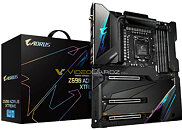BizLink Announces the World's First VESA Certified DP80 Enhanced Full-Size DP Cable
BizLink, a global leader in interconnect solutions, is proud to announce the release of the world's first VESA certified DP80 Enhanced full-size DP cable after the launch of DP80 mDP cable in March 2022. DP80 as the highest standard for cable configuration defines a new standard for display connectivity with emphasis on higher link rate. Certified with the latest version of DP technology, BizLink's DP80 Enhanced full-size DP cable provides a maximum throughput data rate up to 80 Gbps, covering new data rates per lane: UHBR10 (10 Gbps), UHBR13.5 (13.5 Gbps), and UHBR20 (20 Gbps).
In an era consisting of trends such as remote work and extended reality, to deal with the growing needs for high-performance displays and "stay connected" at the most elevated implementation levels becomes crucial. Satisfying user experience and reliable connectivity requires higher data rate conversion. The DP80-marked cable supports UHBR20 at their highest transfer rate, enabling ultimate connections of advanced and latest display applications and systems. With a satisfactory data rate value up to 80 Gbps, the DP80 standard unleashes new capabilities for bringing superior connection to achieve a given level of video quality as image capture and display technology advance.
In an era consisting of trends such as remote work and extended reality, to deal with the growing needs for high-performance displays and "stay connected" at the most elevated implementation levels becomes crucial. Satisfying user experience and reliable connectivity requires higher data rate conversion. The DP80-marked cable supports UHBR20 at their highest transfer rate, enabling ultimate connections of advanced and latest display applications and systems. With a satisfactory data rate value up to 80 Gbps, the DP80 standard unleashes new capabilities for bringing superior connection to achieve a given level of video quality as image capture and display technology advance.




















































